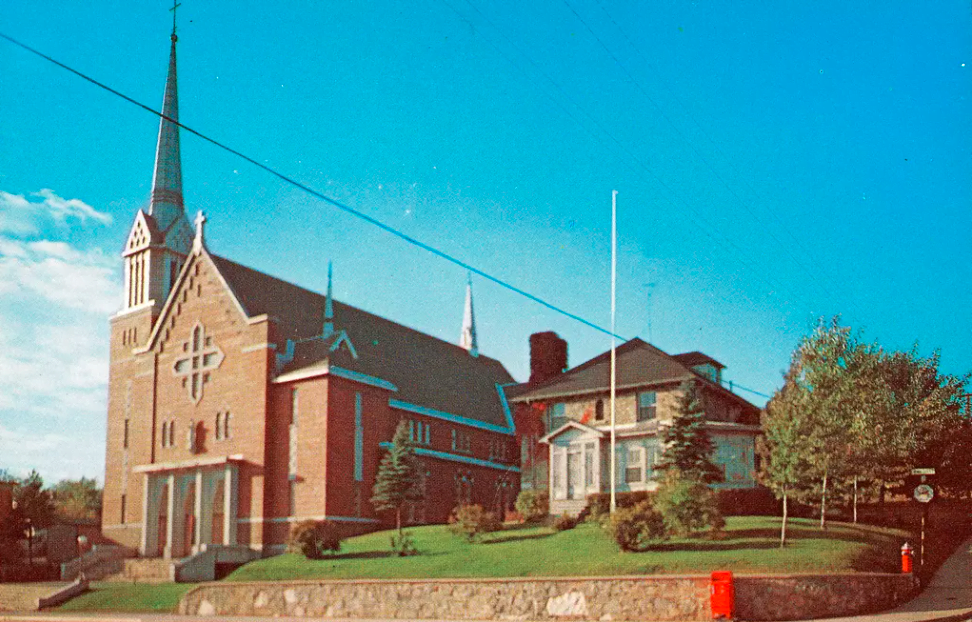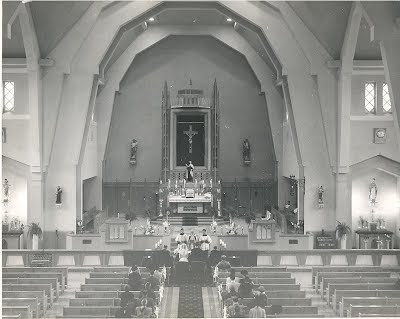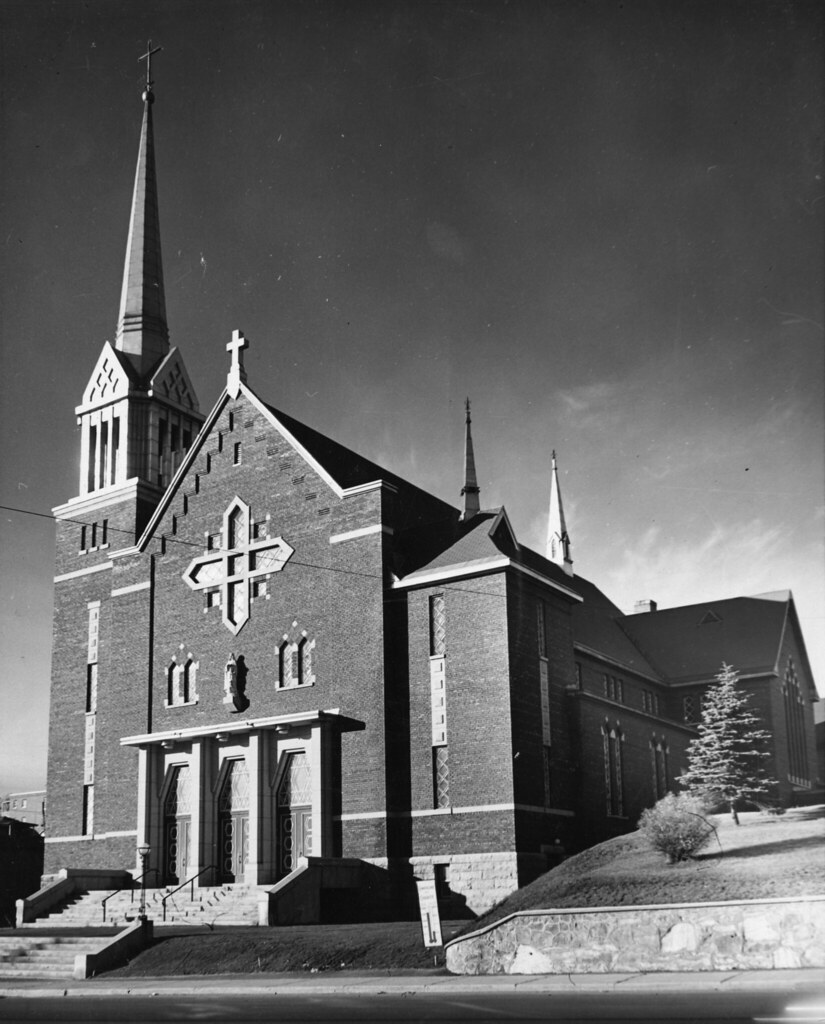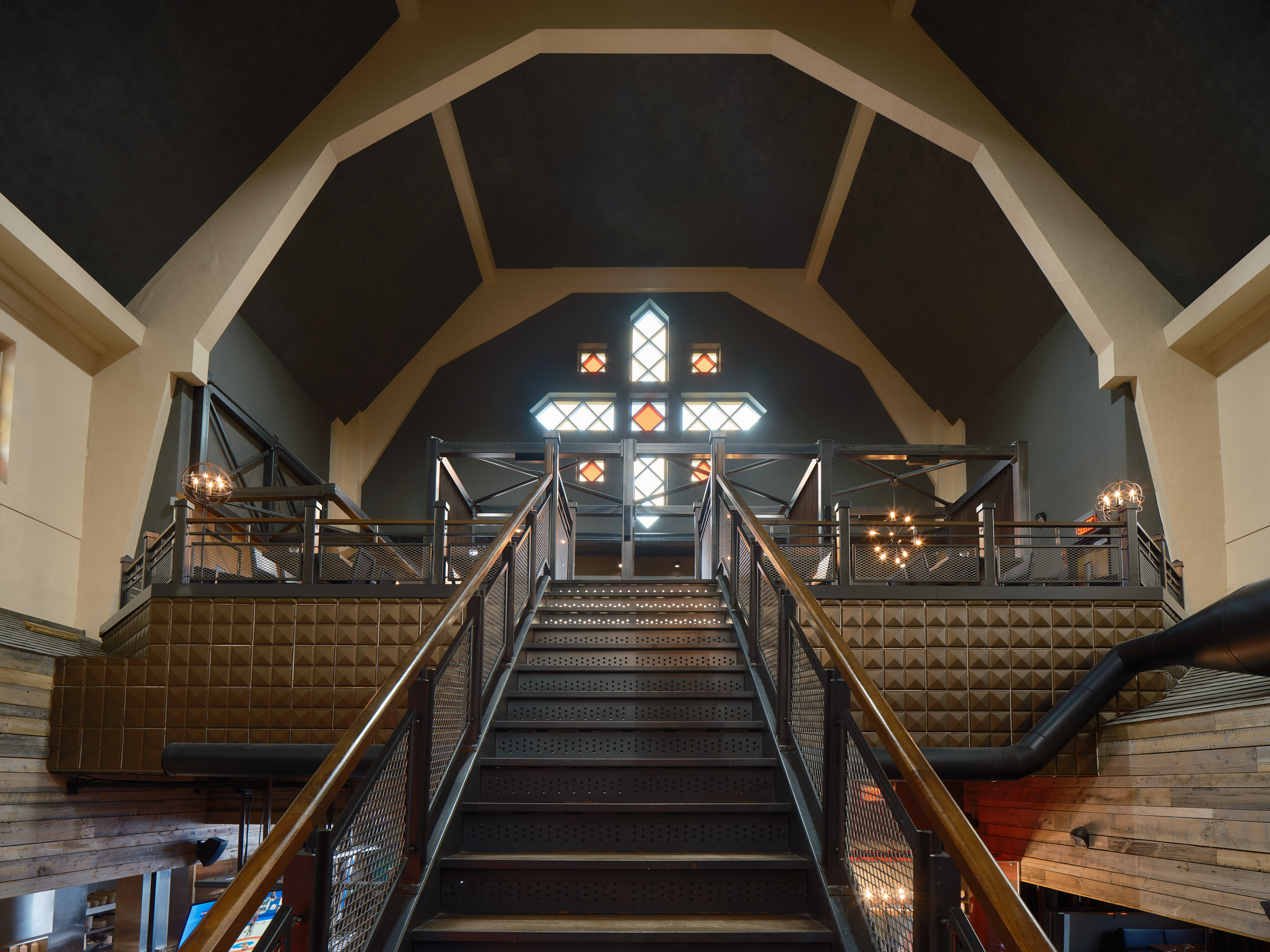



“We know very little about the first Sainte-Thérèse church,” says Marie-Ève Gingras of the Sherbrooke History Museum.
“In the 1900s, Sherbrooke had approximately 11,125 inhabitants. By the time the church was built, that figure had more than doubled, to 24,000.” The burgeoning city of Sherbrooke needed to establish new parishes to cater to the growing number of newcomers, most of whom were workers. At that time, 75% of the population were French-speaking Roman Catholics who were regular churchgoers.
On April 12, 1922, the Sainte-Thérèse Church opened its doors and Monsignor Paul-Stanislas Larocque welcomed the first members of his congregation to celebrate mass, baptisms and weddings.


A few years later, in 1938, the church fell victim to a major fire. As a result, it had to be partially rebuilt—a reconstruction project overseen by architect Denis Tremblay. On reviewing the original building plans, Tremblay decided to alter part of the façade, aided by one Louis-Napoléon Audet, a noted fellow architect who designed many sacred buildings throughout the province, including the landmark Saint-Michel Cathedral Basilica in Sherbrooke.
Both men drew their inspiration from the contemporary style of Dom Bellot, a monk and architect, who worked extensively in Europe as well as in Quebec. Among his most famous creations are the dome of Saint-Joseph's Oratory in Montreal and the facade of Saint-Benoît-du-Lac abbey. Dom Bellot, a monk and architect, who worked extensively in Europe as well as in Quebec. Among his most famous creations are the dome of Saint-Joseph's Oratory in Montreal and the facade ofSaint-Benoît-du-Lac abbey.
The church reopened in 1952 in the midst of the Duplessis era when Roman Catholicism played a major role in Quebec society. According to the Sherbrooke History Museum, at that time, the city was home to 55,000 inhabitants, 75% of whom were Catholic.
The most active period for the Sainte-Thérèse-d’Avila Church were the years between 1950 and 1965. According to Marie-Ève Gingras, religion provided a common bond between people. “Say what you like about Catholicism at that time, it did result in social cohesion by encouraging communities to gather and help one another in times of need.”


As the decades rolled by, Quebecers abandoned the religious practices of their parents and grandparents. Congregations dwindled and churches started to close. Some were even sold. In 2000, Sainte-Thérèse-d’Avila church packed up its sacred accoutrements and closed its doors for good, heralding a new era in the history of the Diocese of Sherbrooke.
"It really wasn’t a shock to most people,” recalls Marie-Ève Gingras. “Church attendance had been dropping for decades, so we were used to churches being closed, one after the other.”
“Quebecers have an ambivalent attitude towards religious buildings. They view them as landmarks and part of Quebec’s heritage. Even people who no longer attend church don’t want to see them disappear altogether. You could say that Quebecers have a cultural, rather than a sacred, attachment to these hallowed sites.”
While some churches have been demolished, others have been repurposed…
Shortly after Sainte-Thérèse closed, André L’Espérance, a key player in the local tourism industry, acquired this heritage building with the goal of putting it to good use and showcasing its architecture and history.
At first, the former church housed the administrative offices of PAL+, the tourism group that operates Le Grand Cru cruise boat as well as two hotels: Espace 4 Saisons and Versō. Later, the building was transformed into a stunning restaurant—the OMG Resto (formerly OMG Burger)—where the innovative menu features flavourful food, imbued with regional ingredients!